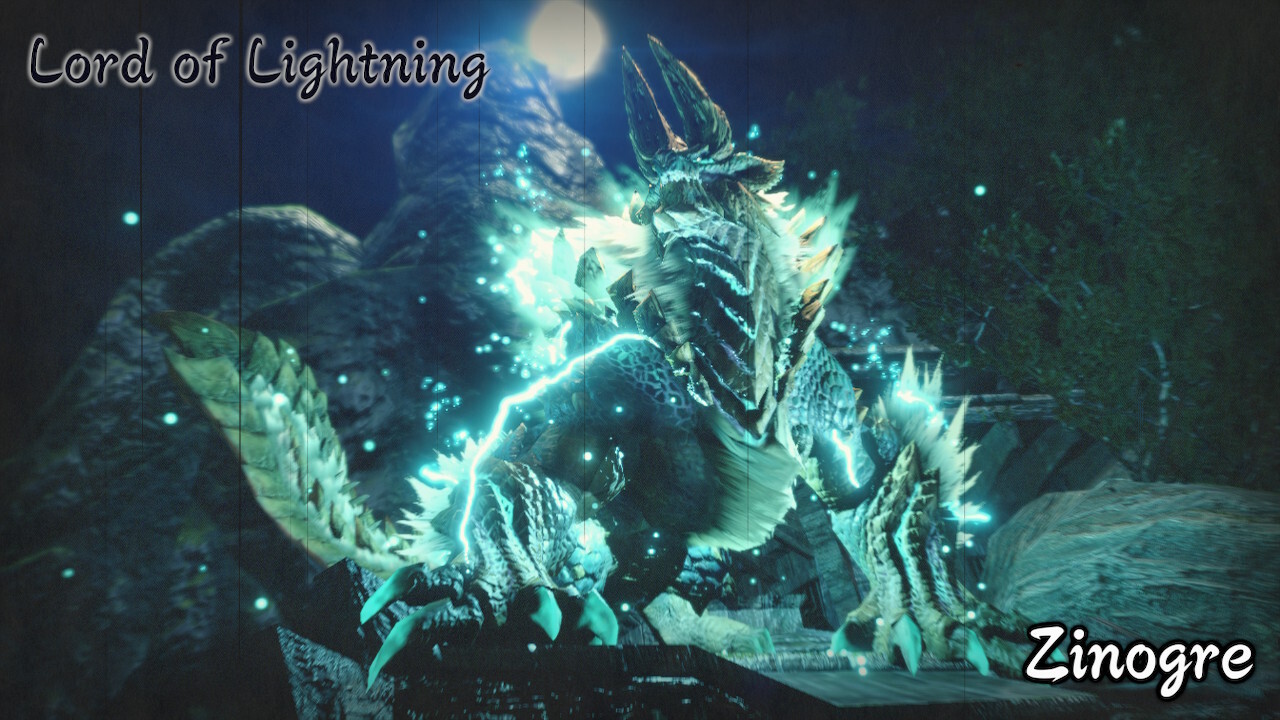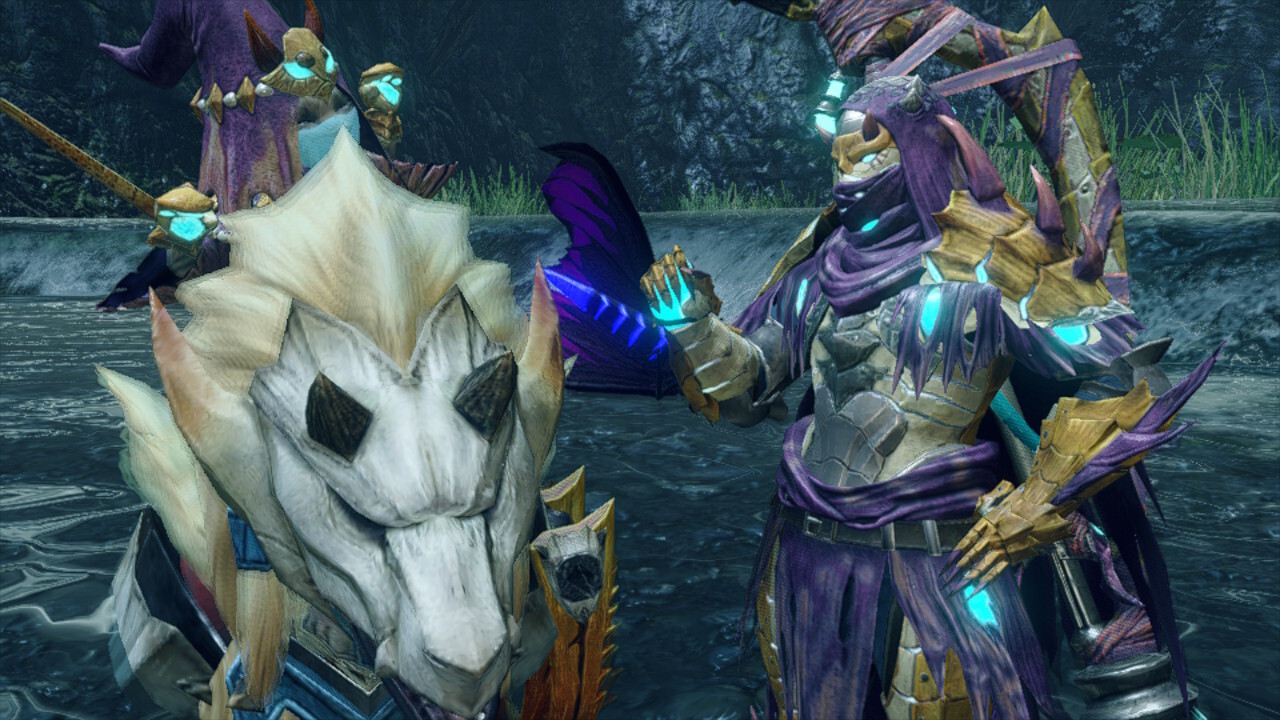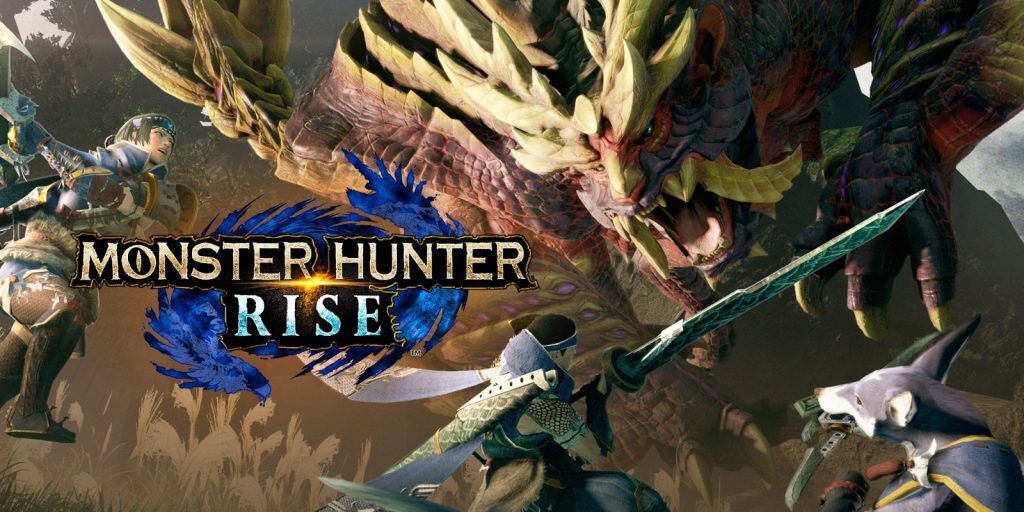Despite doing a poor job of explaining itself to beginners and lacking a true endgame (for now), Monster Hunter Rise is an incredible game. Combat is as satisfying as ever, enhanced perfectly with a few new additions to the formula. Ditto for the monster roster, a strong handful of faces fresh and familiar alike, and they (like the rest of the game) look amazing. There's so much to do. Quests to complete, armour to build, weapons to improve. All of this on a portable platform so that you can get one more hunt done on the commute to work, or standing in line while grocery shopping? What more could one want in a game?
-
Gameplay
-
Presentation
-
Peformance
-
Content
I had my introduction to the Monster Hunter franchise in 2018, when, on a whim no doubt inspired by the enormous amounts of coverage the game got at the time, I picked up a copy of Monster Hunter World for the Xbox One. It took me a while to get into it, but by the time I was ready to put it down over a hundred hours later, I loved it.
It wasn’t until almost exactly a year later, when I bought a copy of Monster Hunter Generations Ultimate, that my appreciation for the franchise was elevated to stratospheric levels. The key factor was that MHGU, while being an older title in design, was on the Nintendo Switch. Despite its lack of many quality of life adjustments added to World, the Switch’s portability was perfectly suited to Monster Hunter’s “Just one more hunt” formula, and so MHGU became one of my favourite games ever.
And by capitalizing on the improvements made to the classic MH formula seen in World, while retaining aspects of the style and feel of older games, and also taking full advantage of its Nintendo Switch platform, Monster Hunter Rise might just be the perfect Monster Hunter game.
Let the hunt begin
Rise, whilst having its own identity, sticks to the tried and true Monster Hunter formula. You, a hunter, are tasked with defending a village from swathes of minorly inconvenient to unbelievably destructive monsters. You complete Village quests to progress the story, using materials carved up from pile of monster carcasses rapidly growing at your feet to improve your weapons and armour as monsters get tougher.
This is the simple yet satisfying gameplay loop that makes Monster Hunter addictive. Kill something, take its items to make yourself stronger, so that you can kill something bigger, so that you can take its items to make yourself even stronger, so that you can kill something even bigger… rinse, repeat, reward. Like most Monster Hunter games, there’s a story going on, but its not why you’re here. Feel free to enjoy it, but in case the title doesn’t make it clear your primary objective is to hunt monsters.
One add-on tied into the story is a new kind of quest called “Rampage” quests. The story explains that every so often monsters will gather in hordes and, you guessed it, rampage, threatening to wipe out your home town in one fell swoop. You defend a series of gates blocking their path using various turrets and traps (or just your weapon and wits if you’re insane), like you would in a tower defense game. While these quests can be a good time and offer some unique rewards, they can sometimes drag a little, and aren’t quite as fun as a regular ol’ tête-à-tête with a Rathalos.
Monster madness

And these regular showdowns are where Rise displays its idiosyncrasies in perfect harmony with its resemblance to older titles. You’ve got a nice roster of monsters, both familiar and refreshingly new, populating a handful of environments for you to explore.
Environments are less dense and detailed than they are in World, understandably considering the hardware difference. But they’re still gorgeous and varied, and the pace of your hunt isn’t bogged down by the loading screens between zones we had to put up with in pre-World (also called “old world”) titles. Rise benefits from a number of quality-of-life improvements World made, such as not having to carry pickaxe for gathering, and monsters automatically showing up on the map. In older games you had to wander the map searching for them, then tag them with a paint ball if you didn’t want to lose them again.
Rise also makes several of its own innovations for map-wandering and combat, two of which being so good I can’t imagine playing a game without them again. The first is the Wirebug mechanic. Wirebugs let you swing around the map like Miles Morales, performing unique and often airborne attacks and allowing you to hop from the tops of broken houses while you take aim at a furious monster below you. For context, previous games didn’t even have a dedicated jump button. The inclusion has also impacted map design, adding a level of verticality that makes exploration feel more like a fun activity than a prerequisite for effective hunting.
The second addition is the Palamute, a canine hunting companion that you can ride. I cannot stress enough how awesome this is. The Palamute lets you travel across the map in a fraction of the time it would take you on foot, and you can drink potions and sharpen your weapon while you’re riding it. It minimises wait time between loading up a quest and wailing on a monster, ramping up the pace of the game entirely.
Looks good, feels good

Aside from that, hunting feels as satisfying as always. You’ve got your choice of 14 weapon types, letting you fight the way you want to. Want to swing a sword twice the size of you to rack up some massive damage in a few hits? By all means. Want to take the death by a thousand cuts approach with a pair of small but blisteringly fast blades? Whatever makes you happiest. It’s all up to you, and every weapon is viable. Toy around and find your style and you’re in for a wildly fun time. There’s also a new mounting system that lets you pit one beast against another, and I don’t think I need to explain how cool that is, even if it’s not the most effective way to deal damage.
In terms of presentation, Capcom has pulled off a feat of technical wizardry. Rise is one of the best looking games on the Switch, and it runs like a dream, stuttering only when things get extremely busy. Colours pop, monsters are gorgeous, and your weapons and armour are all unique and interesting in design (a big draw for many fans).
I’ve got a short list of cons. While this is an incredibly accessible game, Rise is plagued by the endless clunky tutorials and text boxes common to MH that don’t really do much to help new players. If you’re a total newbie, you’re better off looking for help online. In fact, I encourage you to. Additionally, the endgame (one of the most important parts of a Monster Hunter game) is lacking. Currently you’ve only got a series of “Hub” quests to devote your time to outside of Village quests, but that’s really it. The biggest disappointment for me was a lack of Elder Dragons, massive monsters with unbelievable power that promise nail-biting fights and handsome rewards. But Capcom is releasing a free content update at the end of April. This and future updates will probably make this issue moot, so I’ll hold off on judgement for now.
The Verdict
Despite doing a poor job of explaining itself to beginners and lacking a true endgame (for now), Monster Hunter Rise is an incredible game. Combat is as satisfying as ever, enhanced perfectly with a few new additions to the formula. Ditto for the monster roster, a strong handful of faces fresh and familiar alike, and they (like the rest of the game) look amazing. There’s so much to do. Quests to complete, armour to build, weapons to improve. All of this on a portable platform so that you can get one more hunt done on the commute to work, or standing in line while grocery shopping? What more could one want in a game?



